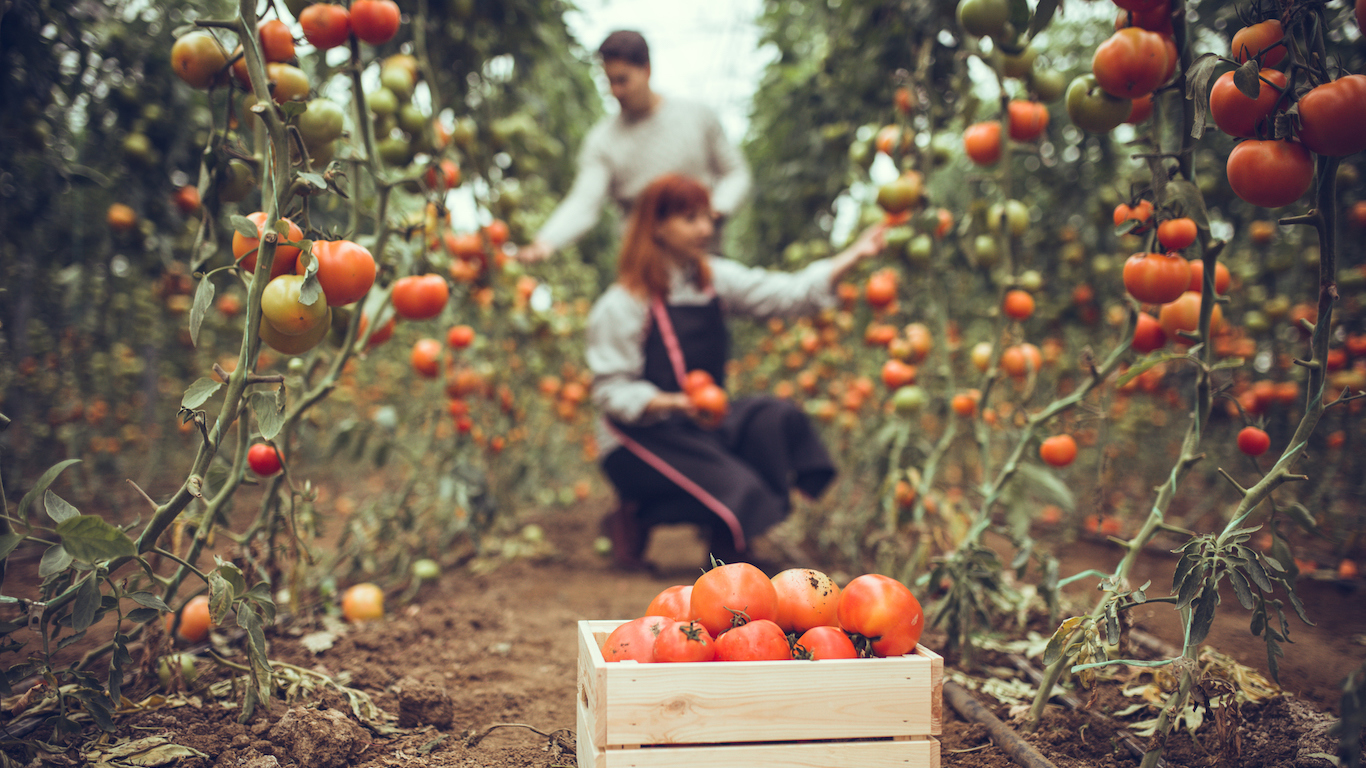
The Lower 48 states cover about 1.9 billion acres of land in what can only be described as a patchwork of cities, farmland, rangeland and public lands. According to U.S. Department of Agriculture (USDA) data, cropland accounts for about 392 million acres, while pasture and rangeland account for 654 million acres. Nearly all the land west of a line along the eastern borders of Montana, Wyoming, Colorado and New Mexico — just over a third of all the land in the lower 48 states — is pasture and rangeland. Cropland accounts for just over 20% of the land in the Lower 48.
The USDA reported in 2011 that 9,140 farms, comprising 3.65 million acres of U.S. farmland, were managed as certified organic, with about 55% (2.03 million acres) as cropland and the rest for pasture and ranchland. By 2016, certified organic acreage on 14,217 organic farms had increased to 5.02 million acres, of which 54% (2.70 million acres) was cropland and 46% (2.30 million acres) was pasture and ranchland.
Between 2011 and 2016, sales of certified organic products more than doubled, from $3.53 billion to $7.55 billion. The value of organic agricultural crops rose from $2.22 billion in 2011 to $4.19 billion in 2016.
Certified organic farmland comprises less than 1% of all U.S. farmland. In Vermont, however, 11% of the state’s farmland is certified organic, and California, Maine and New York all have more than 4% of the state’s total devoted to organic farming.
According to Pew Research, the top food sold by U.S. certified organic farms in 2016 was cow’s milk from more than 2,500 certified organic milk farms, led by New York (471), Wisconsin (453) and Pennsylvania (300).
We’ve listed the 10 states with the most organic farms according to the USDA’s 2016 data. The rankings are based on the number of organic farms in the state, and we’ve included the total value of all organic products produced in the state and divided that total in food crops and livestock/poultry crops.
Click here to see the 10 states that grow the nation’s organic food.
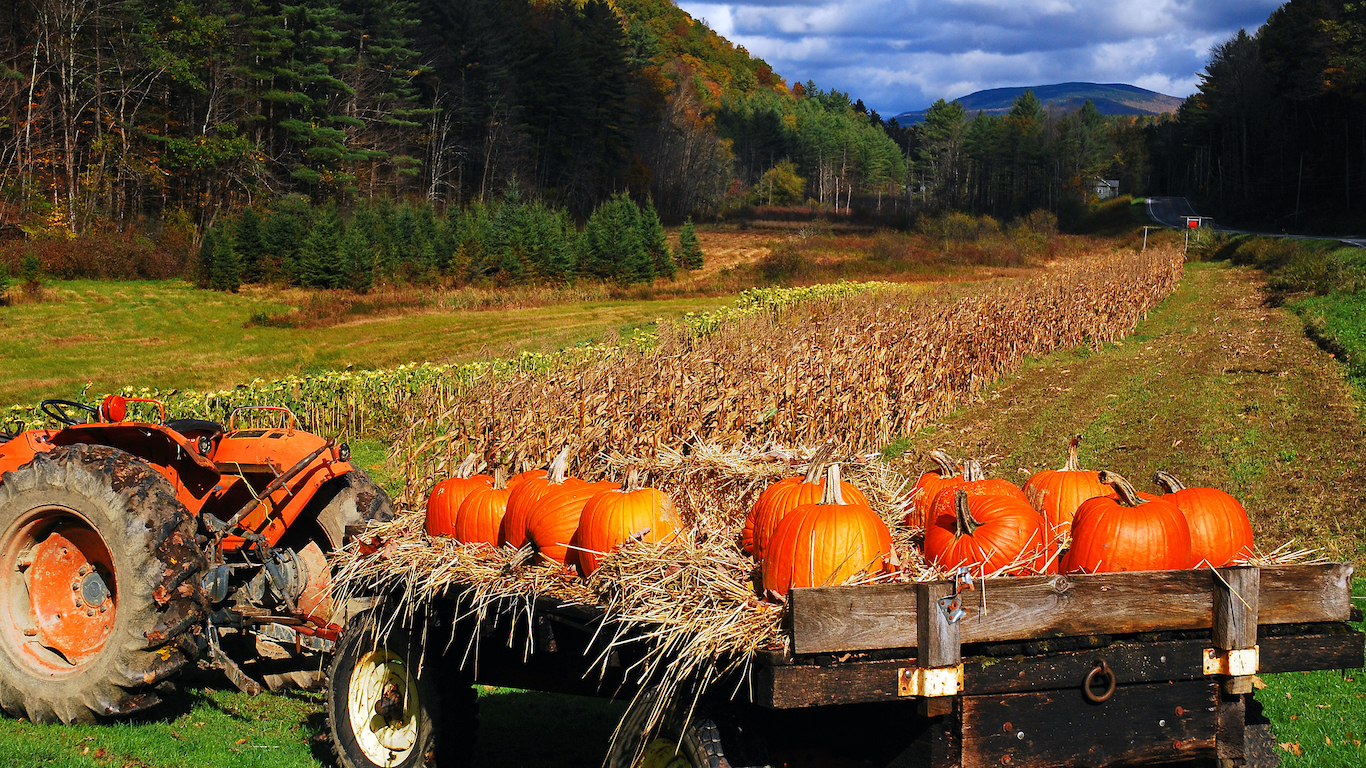
10. Maine
> Number of organic farms: 494
> Organic crop value: $65.65 million
> Crop products value: $40.74 million
> Livestock/poultry value: $24.91 million
The state’s top organic food crops are potatoes, lettuce and carrots. Field crops contributed $1.8 million in 2016, and the state is the second-largest producer of maple syrup in the country.
See all stories featuring: Maine
[in-text-ad]
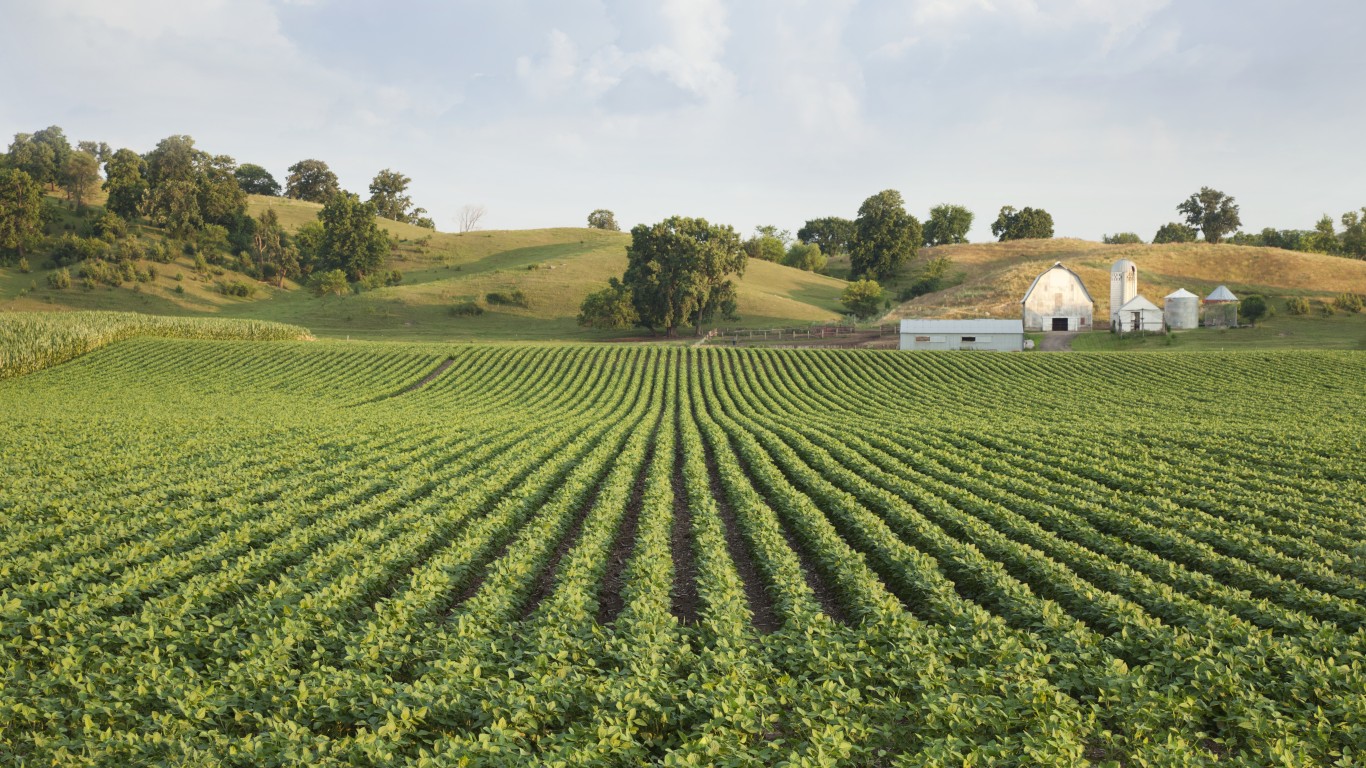
9. Minnesota
> Number of organic farms: 545
> Organic crop value: $106.48 million
> Crop products value: $51.22 million
> Livestock/poultry value: $55.25 million
Minnesota’s top organic food products include peas, tomatoes and carrots. The state is also the nation’s second-largest producer of organic turkeys. Organic field crops contributed nearly $45 million in 2016.
See all stories featuring: Minnesota
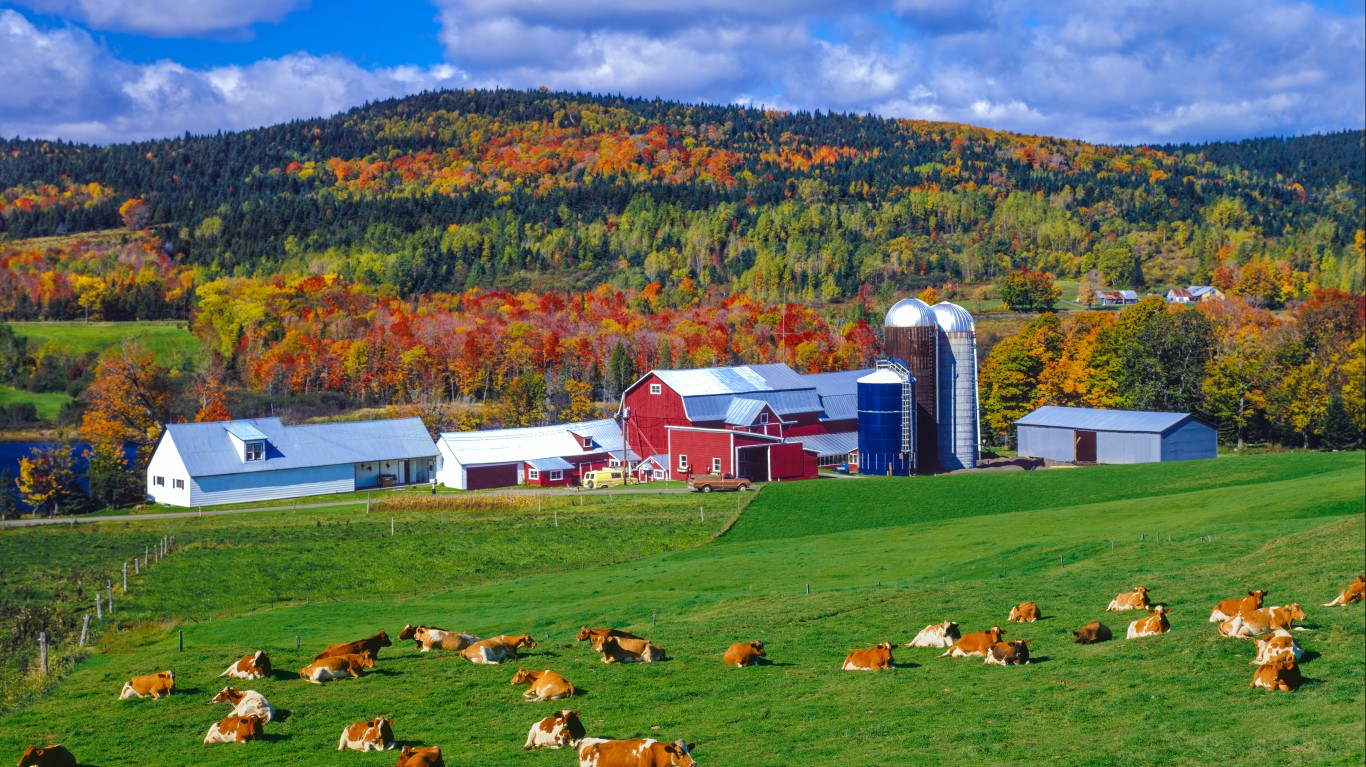
8. Vermont
> Number of organic farms: 556
> Organic crop value: $127.05 million
> Crop products value: $55.94 million
> Livestock/poultry value: $71.11 million
Vermont’s top organic products are maple syrup, squash and lettuce. The value of its maple syrup crop in 2016 was nearly $32 million, well ahead of second-place Maine, which had a maple syrup crop value of $19 million.
See all stories featuring: Vermont
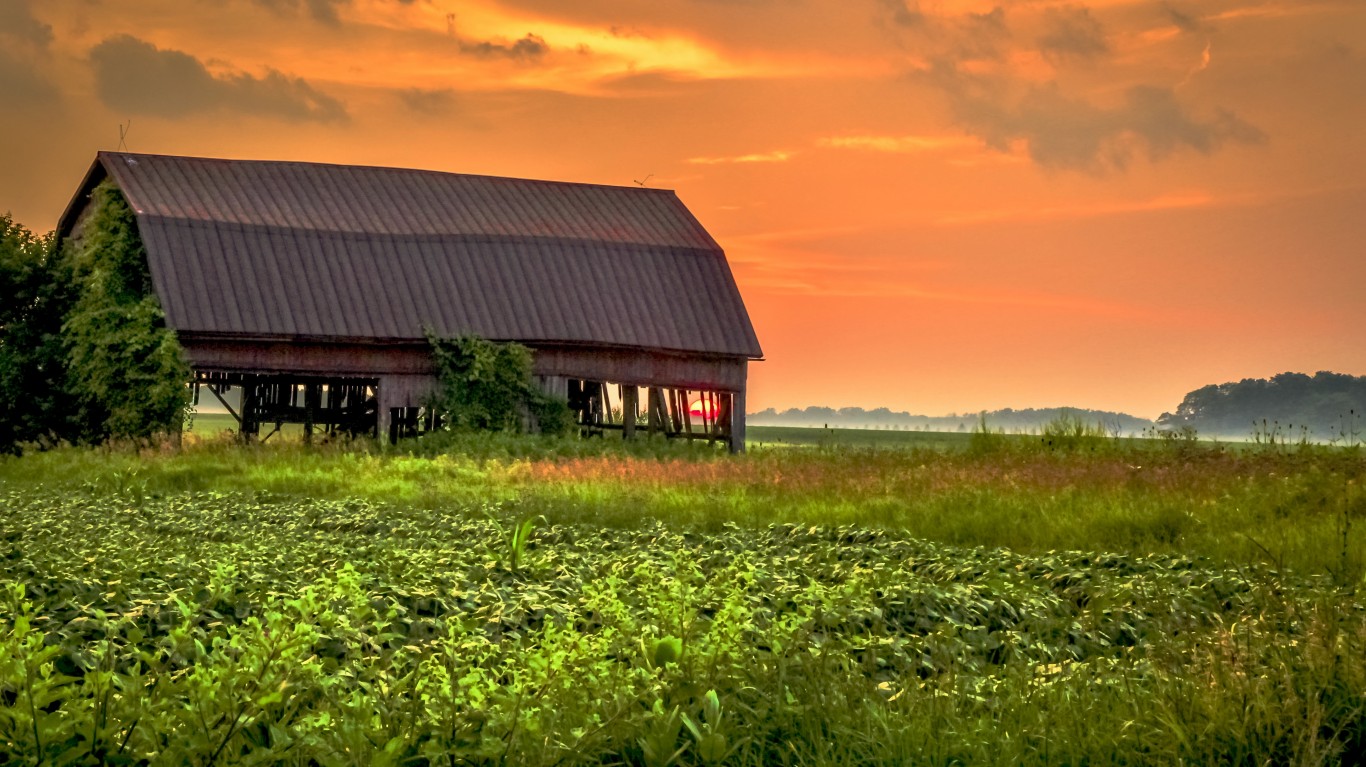
7. Ohio
> Number of organic farms: 575
> Organic crop value: $101.24 million
> Crop products value: $23.38 million
> Livestock/poultry value: $77.86 million
The state’s top organic food crops are squash, tomatoes and lettuce. In 2016, Ohio’s organic field crops were valued at $16 million.
See all stories featuring: Ohio
[in-text-ad]

6. Washington
> Number of organic farms: 677
> Organic crop value: $636.25 million
> Crop products value: $533.43 million
> Livestock/poultry value: $102.81 million
Washington’s top organic crops include potatoes, sweet corn and onions. Field crops contributed nearly $21 million to the state’s total organic crop value in 2016.
See all stories featuring: Washington
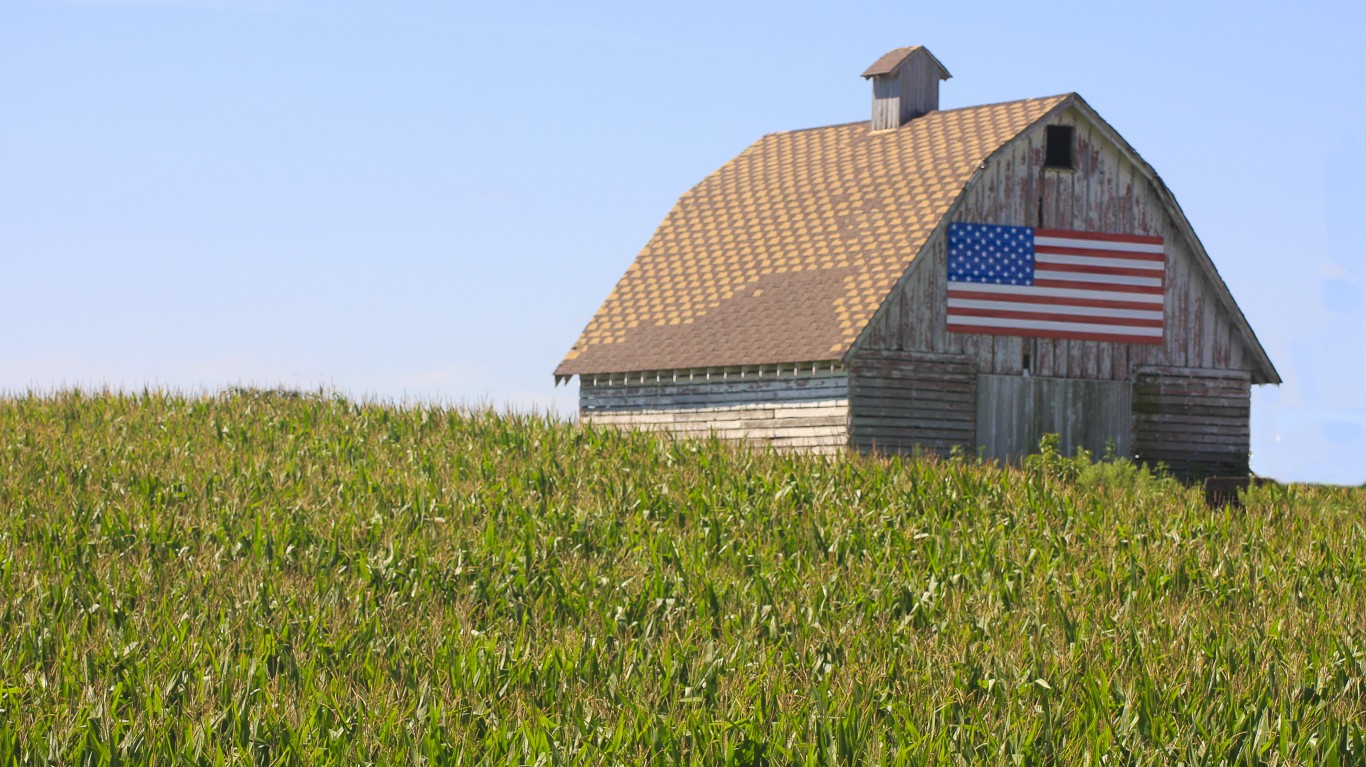
5. Iowa
> Number of organic farms: 732
> Organic crop value: $131.19 million
> Crop products value: $57.12 million
> Livestock/poultry products: $64.06 million
Top organic crops in Iowa include squash, lettuce and tomatoes. Iowa’s organic field crop value is $51 million, the fourth highest in the country.
See all stories featuring: Iowa
[in-text-ad-2]
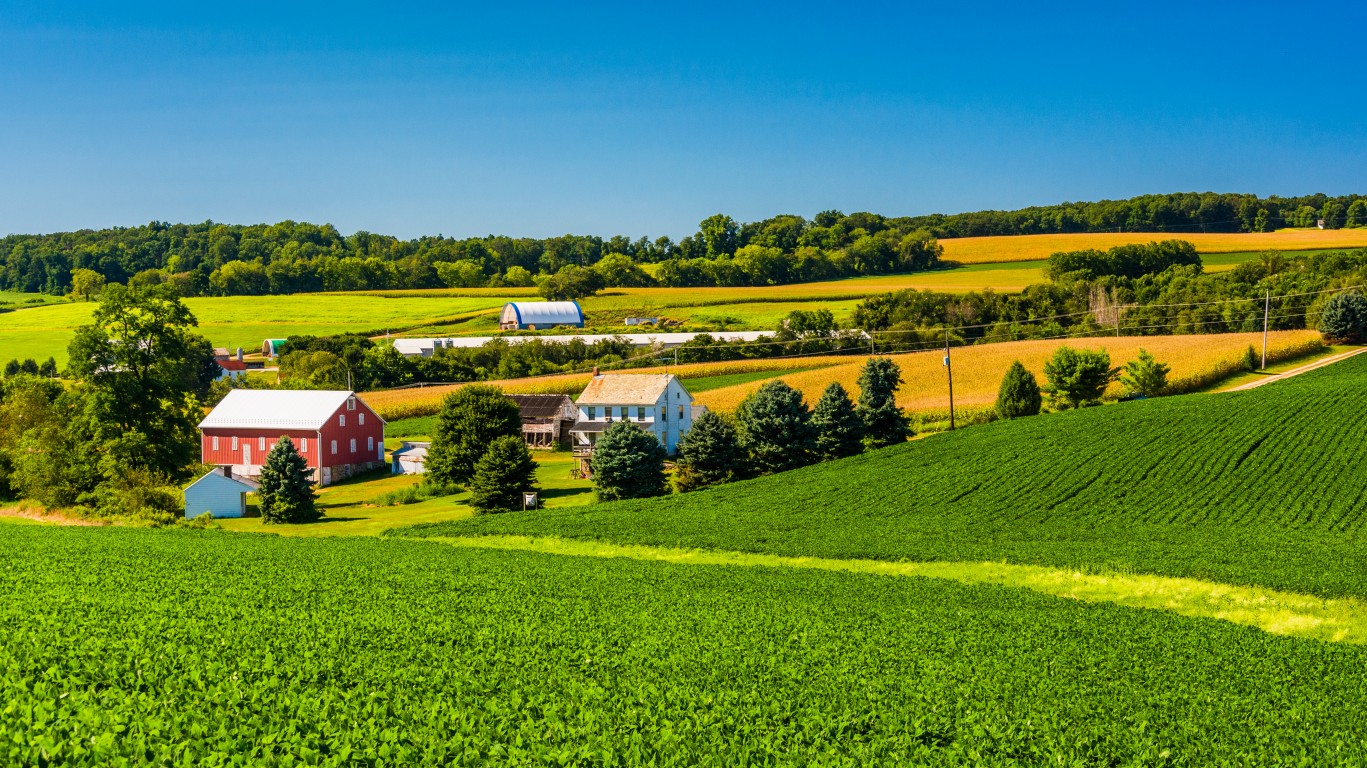
4. Pennsylvania
> Number of organic farms: 803
> Organic crop value: $659.63 million
> Crop products value: $83.52 million
> Livestock/poultry: $576.10 million
Pennsylvania’s top organic food crops are potatoes, tomatoes and lettuce. Nonfood field crops — field corn, hay, and other animal feeds — account for about $16 million in the state’s organic crop value.
See all stories featuring: Pennsylvania
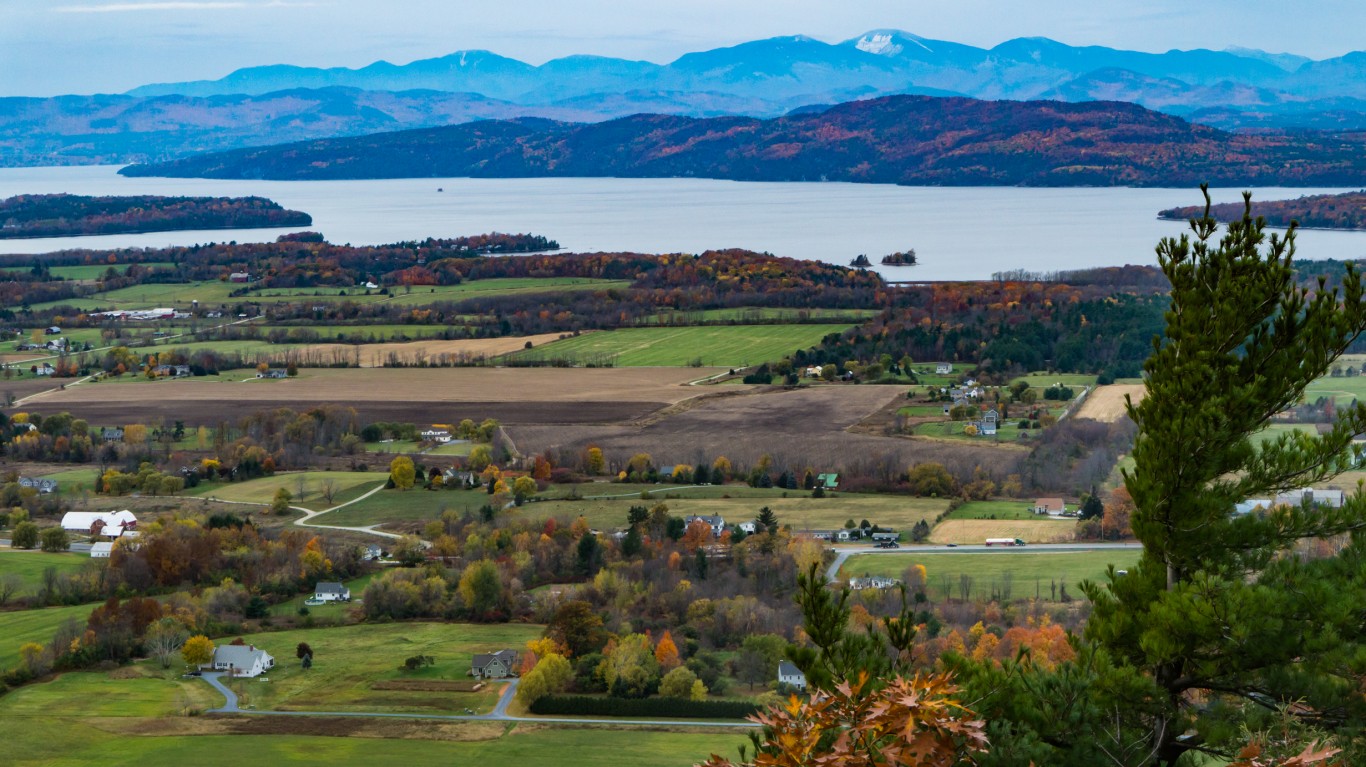
3. New York
> Number of organic farms: 1,059
> Organic crop value: $215.86 million
> Crop products value: $52.48 million
> Livestock/poultry value: $163.37 million
The state’s top organic food crops include lettuce, tomatoes and squash. The value of organic field crops grown in New York is just over $22 million.
See all stories featuring: New York
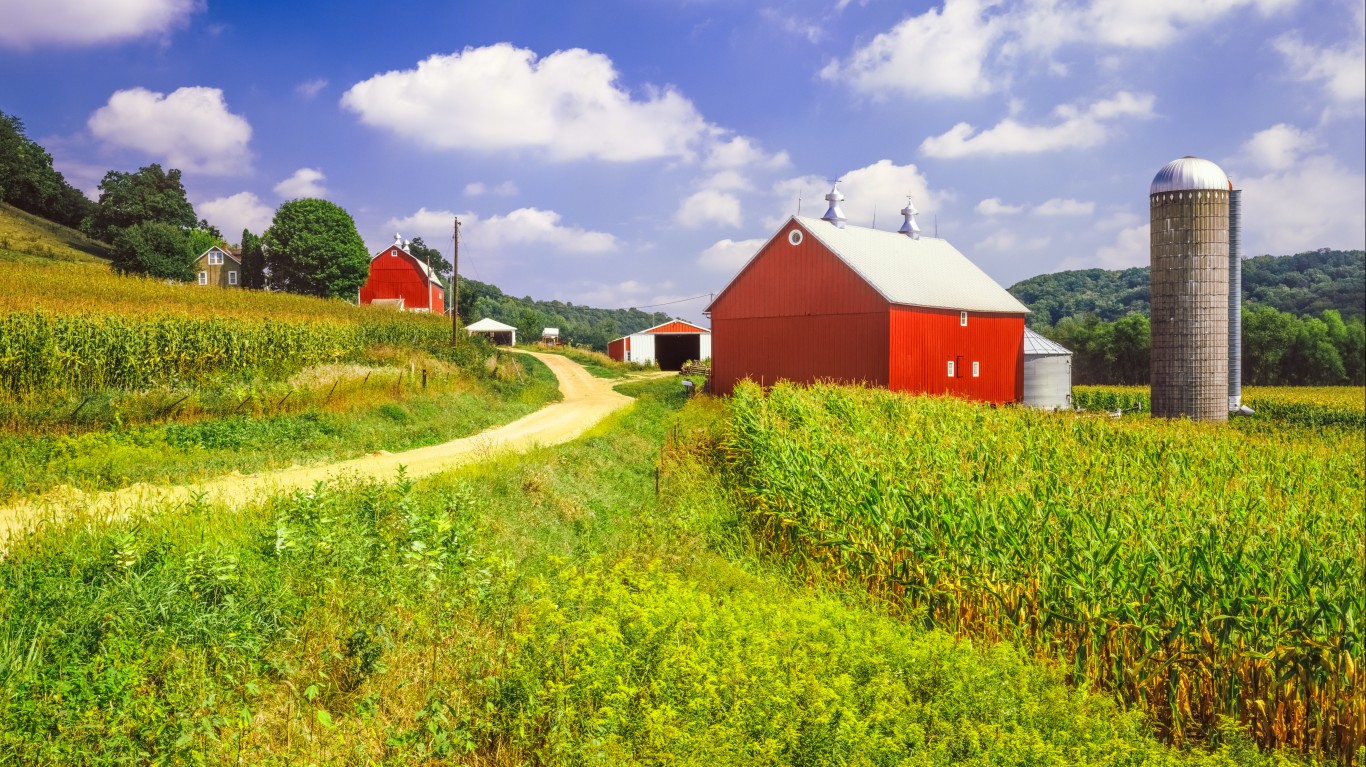
2. Wisconsin
> Number of organic farms: 1,276
> Organic crop value: $255.45 million
> Crop products value: $58.23 million
> Livestock/poultry: $197.22 million
Wisconsin’s top organic crops include sweet corn, onions and squash. The state’s field crops contribute about $25 million to its total organic crop production. The state also had the country’s second-largest dairy herd of nearly 28,000 cows.
See all stories featuring: Wisconsin
[in-text-ad]

1. California
> Number of organic farms: 2,713
> Organic crop value: $2.89 billion
> Crop products value: $2.13 billion
> Livestock/poultry value: $759.87 million
California’s top crop products include berries and other fruits, lettuce and tomatoes. The state is the nation’s largest producer of field crops and also the largest organic dairy and beef herds.
See all stories featuring: California
The #1 Thing to Do Before You Claim Social Security (Sponsor)
Choosing the right (or wrong) time to claim Social Security can dramatically change your retirement. So, before making one of the biggest decisions of your financial life, it’s a smart idea to get an extra set of eyes on your complete financial situation.
A financial advisor can help you decide the right Social Security option for you and your family. Finding a qualified financial advisor doesn’t have to be hard. SmartAsset’s free tool matches you with up to three financial advisors who serve your area, and you can interview your advisor matches at no cost to decide which one is right for you.
Click here to match with up to 3 financial pros who would be excited to help you optimize your Social Security outcomes.
Have questions about retirement or personal finance? Email us at [email protected]!
By emailing your questions to 24/7 Wall St., you agree to have them published anonymously on a673b.bigscoots-temp.com.
By submitting your story, you understand and agree that we may use your story, or versions of it, in all media and platforms, including via third parties.
Thank you for reading! Have some feedback for us?
Contact the 24/7 Wall St. editorial team.
 24/7 Wall St.
24/7 Wall St.

